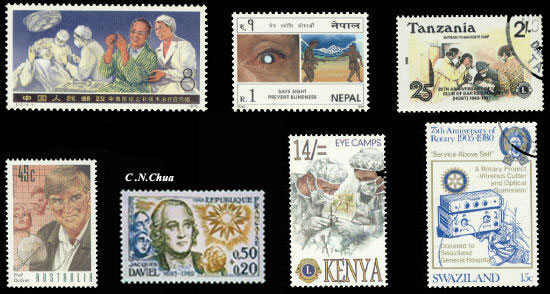Cataract is one of the
most common causes of blindness worldwide. The earliest document of cataract
surgery is derived from ancient Hindu medicine in the teachings of
Susrata some 2000 years ago. The technique was called couching and involved
displacement of the lens into the vitreous cavity, thus clearing the visual
axis. In this technique, the sclera was perforated with a sharp instrument
and a blunt instrument was inserted through the scleral incision
and the cataractous lens was pushed backward. The modern technique of extracapsular
cataract extraction was developed by Jacques Daviel (1696–1762) of France.
In 1748 Daviel described his technique of cataract surgery in which the
cataractous lens was extracted from the eye. The use of implants was thanked
to the observation of Harold Ridley (1907-2001). Ridley implanted the first
IOL in 1949, after observing that World War II aviators could tolerate
shards of plastic aircraft canopies in their eyes. The technique of phacoemulsification
was first introduced by Charles Kelman in the late 1960s.
Although the management of cataract
has a high success rate many people in the developing countries have poor
access to the facilities. Fred Hollows (1929-1991), an Australian ophthalmologist,
helped to improve the qualities of many patients in the developing countries
by setting up factories that produce affordable intraocular lenses.
|
